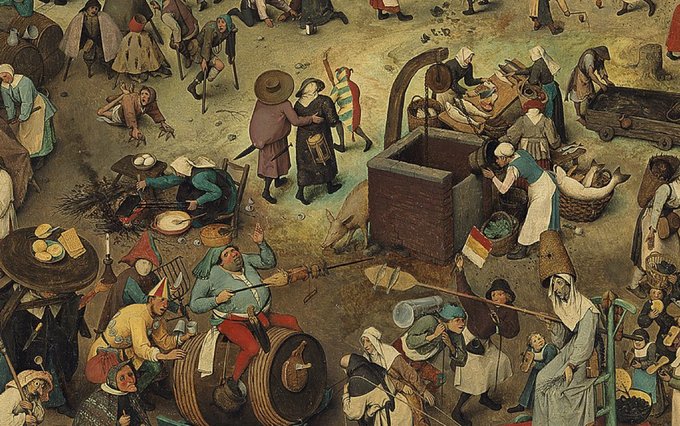Why was maintaining a good personal hygiene during the Middle Ages a real challenge?
There is hardly anyone who thinks that life in the Middle Ages was easy. Bloody battles, disease, famine and poverty were part of the daily lives of the people living at that time. For this reason, it is not surprising that for many, personal hygiene was an impossible luxury available only to the wealthiest nobles.
Lack of sewerage
If you have a time machine and decide to see what life was like in medieval London, for example, one thing can’t help but make a strong impression on you as soon as you arrive – the bad smell. This fact is not particularly surprising, as the British capital at that time did not have a functioning sewer system. An interesting detail is that such a system existed during the Roman Empire (all waste was dumped in the River Thames), but after its disintegration no one continued to maintain it and it became unusable.
Let’s make a simple calculation: about 100,000 people lived in medieval London. Every day they produced a total of about 5 tons of feces. Now multiply that by 365 and you get the total amount that was mostly dumped on the streets within a year. To find a solution to the problem, some people started using septic tanks, but this proved to be not very effective, as they later turned out to contaminate the wells, which at that time were the main sources of drinking water. Disposal of waste in the Thames created problems for shipping and was banned by law in 1357.
Medieval medicine
The fact that people in the Middle Ages had no idea what bacteria were and how they spread is indicative of medicine in this historical period. However, some practices at the time were surprisingly effective. An example of this is the application of honey on wounds (in addition to being sticky and helping wounds to heal, it also has antibacterial properties). Others treated the injuries with moss without realizing that some of them contained penicillin. However, such positive examples of medical practices in the Middle Ages are rare exceptions. A number of “recipes” have reached us, which from today’s point of view are more than absurd. One of them is a cure for gout. What are the ingredients? Herbs, bone marrow, worms and… boiled dog. Another treatment for this disease included applying frog and deerskin ointment. As medicine went hand in hand with superstitions in the Middle Ages, such “recipes” were very popular.
The knowledge of physicians at that time was largely based on a theory established in ancient Greece. According to her, health depends on the balance of four fluids contained in the human body – blood, lymph, black and yellow bile. For this reason, one of the most common treatments was the so-called bloodletting. According to medieval physicians, draining small amounts of blood can restore body fluid balance. Leeches were often used for this purpose, which were attached to the parts of the patient’s body affected by a disease.
Bathing and its healing properties
One of the main reasons why people in the Middle Ages sought to be frequent was the popular theory of miasma at the time. According to her, the diseases were transmitted with a bad smell. “However, the fact that people strived to be clean did not mean that they were able to achieve this goal – especially by today’s standards,” said historian Virginia Smith. She notes that bathing was a very difficult task. “If you go to a public bathroom, you will have to share the water you use with other people. If you are wealthy enough to afford your own bath, you will have to wait a long time for the water needed to fill it to warm up.
Bathing undoubtedly occupied an important place in the life of medieval man. It was something of a holiday, Smith added. She cites as an example paintings by 15th-century German artists depicting long queues of people waiting their turn to enter the city baths. “Other images show whole families eating naked in large bathtubs, and other people lying next to them on wide beds. This clearly shows how significant these events were in the Middle Ages – something that probably seems completely incomprehensible from the point of view of modern man, “said Smith.
Laundry
Clothes in the Middle Ages were very expensive and even the nobles did their best to wear them for as long as possible without changing them. To protect their clothes, people were rarely afraid to wash them, as this would wear them out. In most cases, the clothes were simply ventilated or placed near aromatic herbs or dried rose leaves. There is another important detail – today we are used to our laundry smelling nice and fresh, but the situation in the Middle Ages was different. The reason is that… urine was often used as a detergent (because it is rich in ammonia, it can remove any stains and also repel moths). Fortunately, in most cases, all necessary measures were taken not to mix drinking water with that used in laundry.









